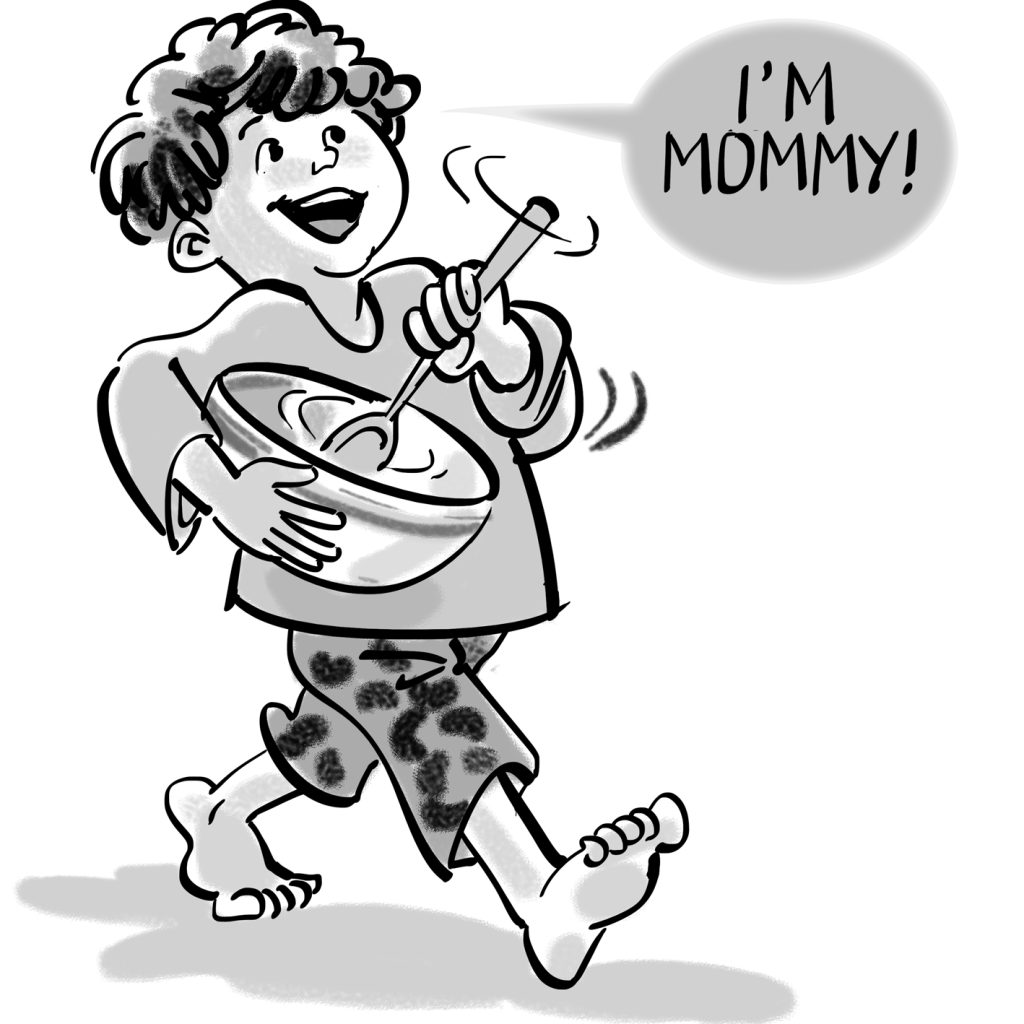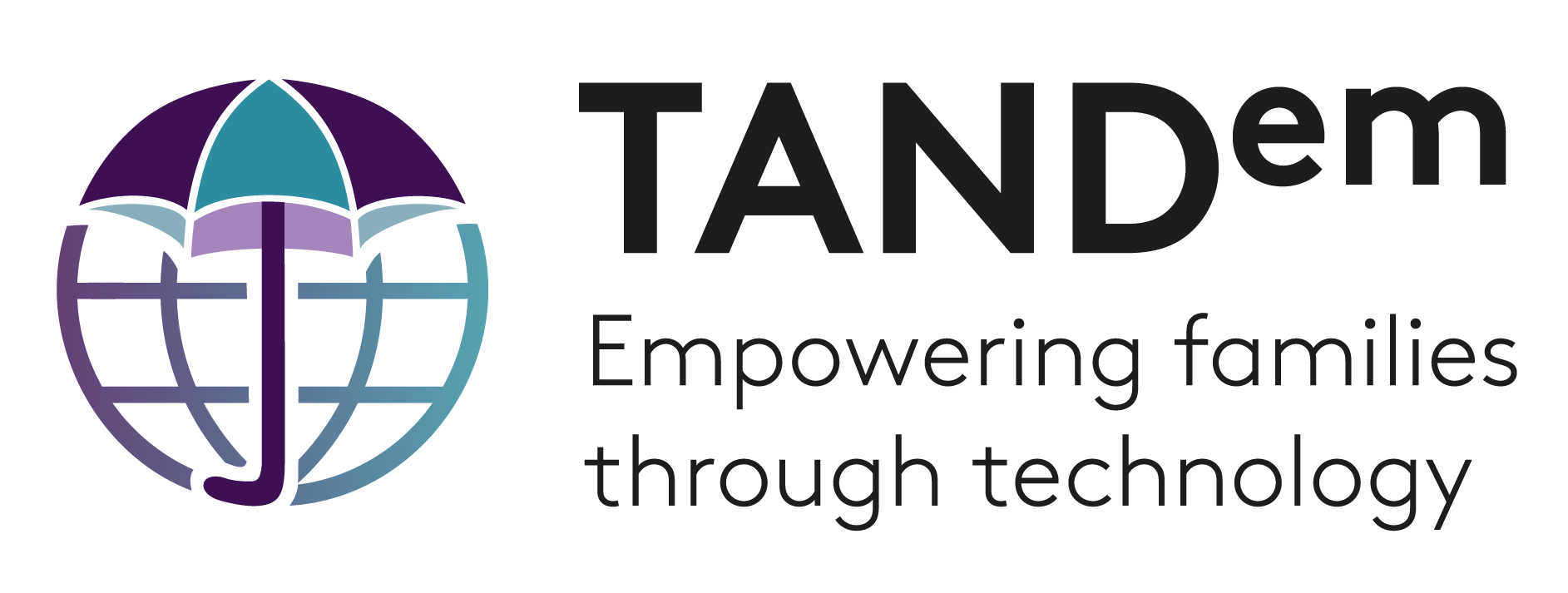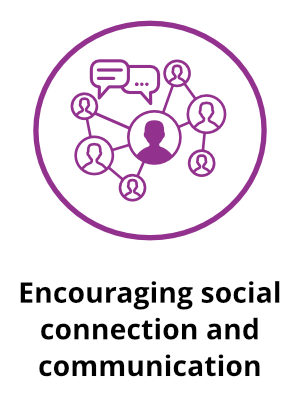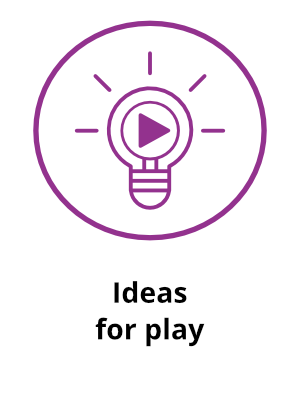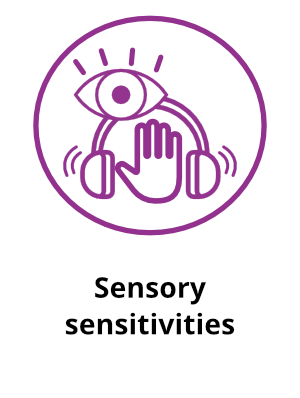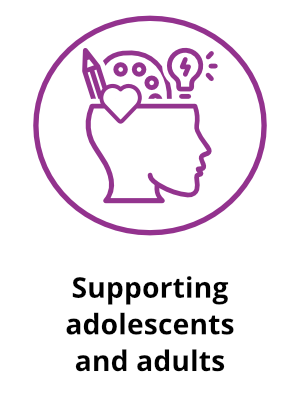Autism-like Cluster
Home > TAND Clusters > Autism-like > What to do > Ideas for play
Ideas for play
To engage your child in play, it is helpful to understand your child’s level of play. Use these pictures below to figure out where your child is and see suggestions of how you can promote engagement during these types of play. You can view examples of these play ideas in the resource panel.
Caregiver Skills Training: Using Play to Promote Engagement
[autismspeaks.org]
People games
‘People games’ are songs, rhymes or other games without toys. Because there are no toys or objects involved, your child may find it easier to engage with you in these people games than when playing with toys or objects. They are therefore very useful for encouraging eye gaze, gestures, requesting for more and sharing enjoyment. Choose a few predictable songs or rhymes that are well-known in your language and culture. Say these often during the day in a fun way with intonation, expression, and actions. They can include peekaboo, tickle games, songs, rhymes or chasing games. Once these become familiar to your child, try using pauses to encourage your child to take their turn. This can be to fill in the last word of a familiar line, or use a sound or gesture and a look to get the song going again! For example, in “Ring around the roses” pause before the last word in the line “We all fall …”. If your child is expecting you to fall, wait for a look, sound or action before falling down. This moment is powerful for your child’s understanding that their looks, sounds, actions and words are powerful in directing your behaviour.
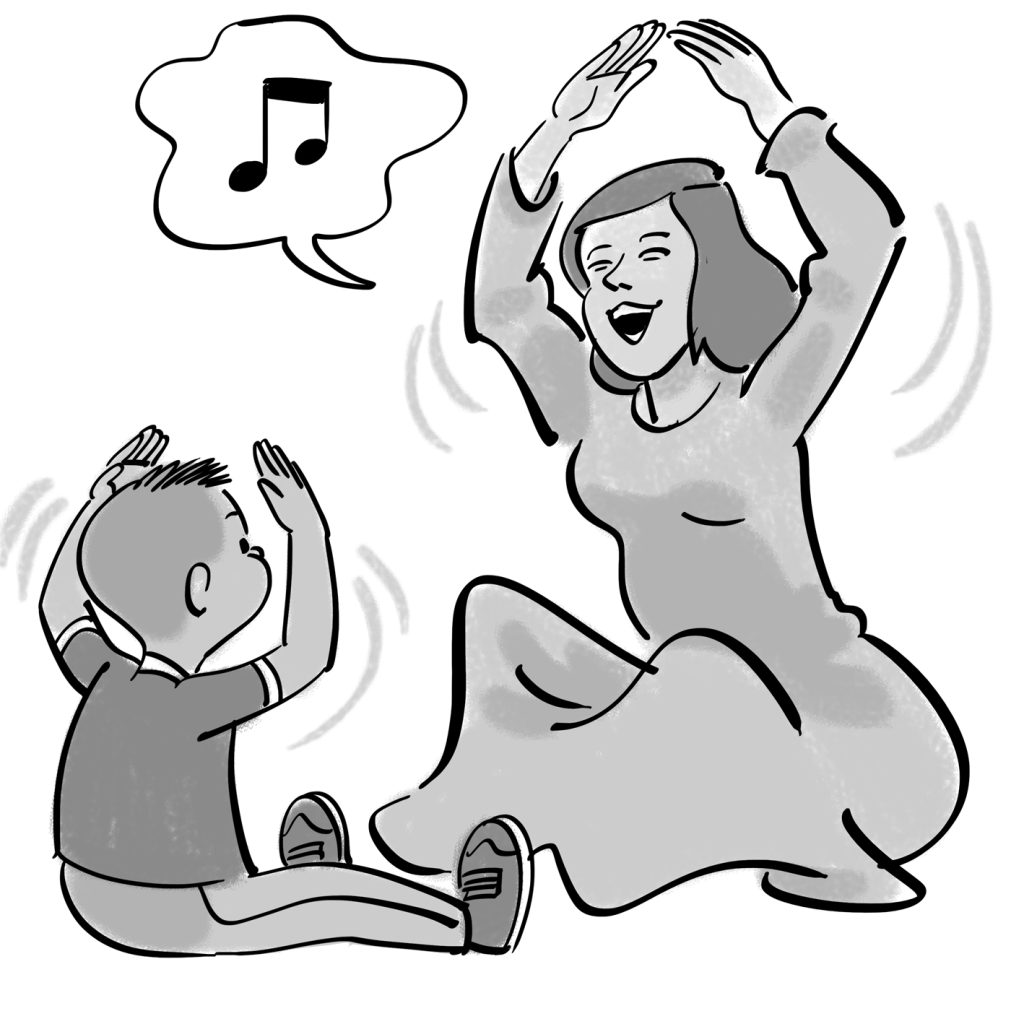
Simple play
Your child may be in the ‘simple play’ level where they are experimenting with objects. They may be using objects or toys in ways that are unconventional, such as spinning the wheels of cars rather than driving them. You and your child can experiment with the natural way objects are used e.g. rolling a ball back and forth. Sometimes it helps to have a third person to demonstrate this rolling a ball back and forth between two people with a short phrase to make it predictable such as “1-2-3-go!” You can also start by imitating what your child is already doing with an object or toy (especially if you have the same object or toy). If your child notices your action, you can keep going to promote the feeling of turns, and in time model new actions for your child to imitate.
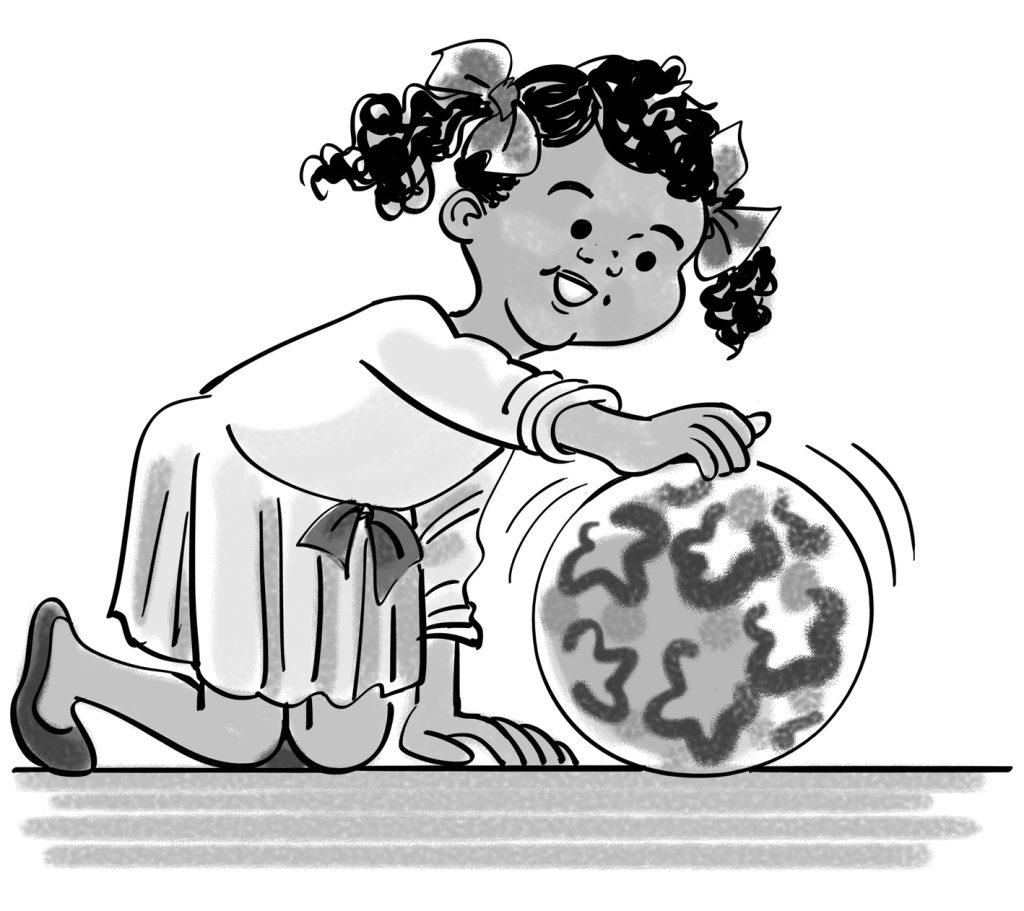
Put together play
In ‘put together play’ your child is learning how to relate two objects together. At this level, you can encourage your child to put things in/out of other things or bang two things together. In the picture here, the child is already putting stones in the box. Mom can come alongside and imitate his action adding matching language “stone in”, leading to turns putting stones in the box. When the stones are all in, she can quickly model a new step of emptying the stones out the box (saying “stones out”) and start the routine again by putting a stone in and waiting for her child to take his turn. If he doesn’t do it immediately, she can make this even more clear by holding out a stone to him. In this way, she is engaging her child in something he likes to do (putting stones in), teaching a new step (throwing the stones out) and extending his engagement by quickly starting the routine again to make it last longer, all with the appropriate language matched to the actions.
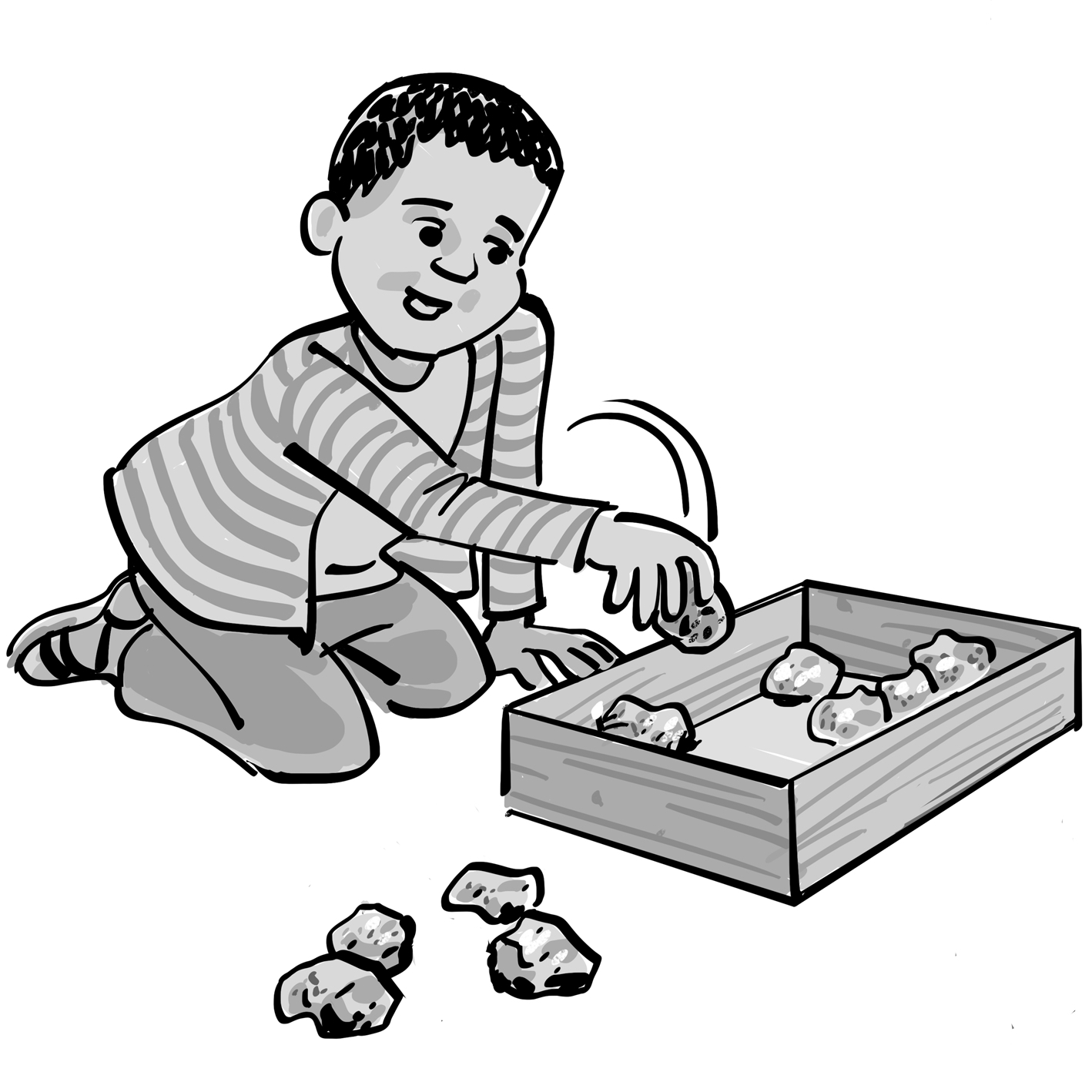
Early pretend play
In ‘early pretend play’ you can encourage your child to pretend with objects, e.g. stirring in a cup, feeding a teddy food or a bottle, making a toy animal jump. Children typically learn to use objects functionally on themselves first, for example, pretending to drink from an empty cup, then move on to having a doll or teddy pretend. You can model these actions on yourself and dolls or teddies once your child is noticing your actions.

Advanced pretend play
In ‘advanced pretend play’ you and your child can enact any routines they are familiar with in a pretend way e.g. baking a cake, playing a musical instrument, or racing cars. Usually, this type of play uses lots of language to give roles, narrate actions and direct others. You will realise that a balance is needed between allowing your child to lead the action to promote their initiative and spontaneity and you suggesting or modelling new and novel steps to keep your child learning new things in a flexible manner and help them not to get ‘stuck’ on repeating the same routine over and over.
